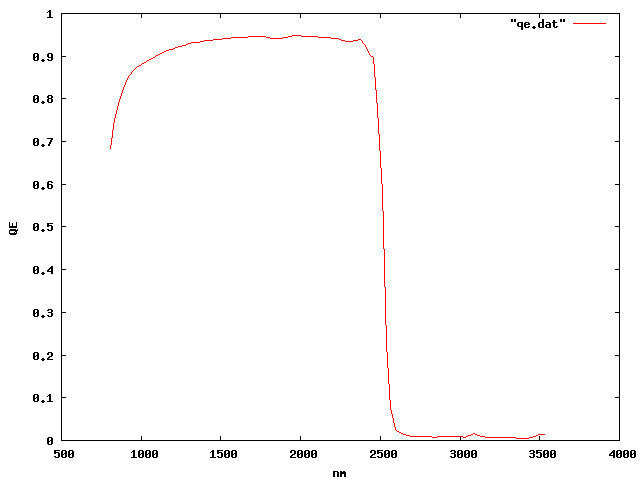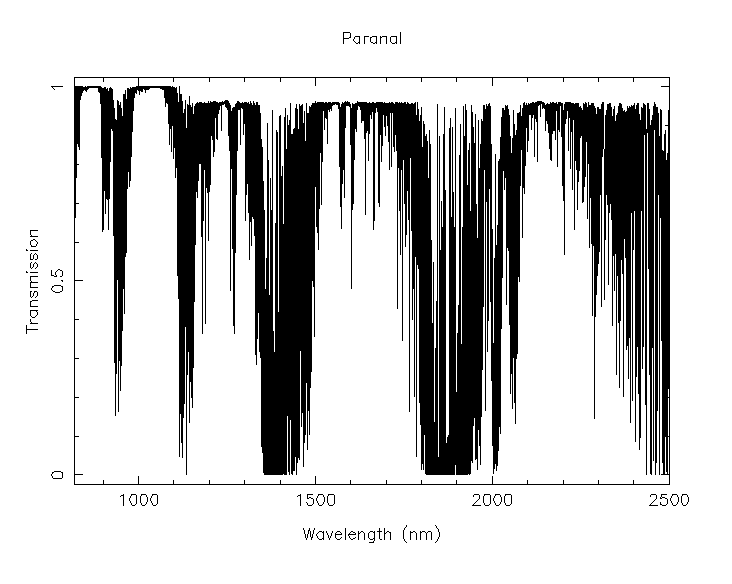
.........................
Integration - a simple snapshot, within the data acquisition system, of a specified elapsed time. This elapsed time is known as the detector integration time - DIT secs.
Exposure - the stored product of many individual integrations, that have been co-added in the DAS. Each exposure is associated with an exposure time.
Microstep (pattern) - a pattern of exposures at positions each shifted by a very small movement (<3 arcsec) from the reference position. Unlike a jitter the non-integral part of the shifts are specified as 0.5 of a pixel, which allows the pixels in the series to be interleaved in an effort to increase resolution. A microstep pattern can be contained within each position of a jitter pattern.
Jitter (pattern) - a pattern of exposures at positions each shifted by a small movement (<30 arcsec) from the reference position. Unlike a microstep the non-integral part of the shifts is any fractional number of pixels. Each position of a jitter pattern can contain a microstep pattern.
Pawprint - the 16 non-contiguous images of the sky produced by the VISTA IR camera, with its 16 non-contiguous chips. The name is from the similarity to the prints made by the padded paw of an animal (the analogy suits earlier 4-chip cameras better).
Tile - a filled area of sky fully sampled (filling in the gaps in a pawprint) by combining multiple pawprints. Because of the detector spacing the minimum number of pointed observations (with fixed offsets) required for reasonably uniform coverage is 6, which would expose each piece of sky, away from the edges of the tile, to at least 2 camera pixels.
An example detector QE curve.

power law specified as either f_nu, f_lambda or nu*f_nu, where "alpha" is defined by, for example, f_nu = nu**alpha
black body distribution of flux specified by "temperature"
Gaussian profile flux distribution centred on "wavelength" and with sigma equal to "width". "Flux" is the total line flux integrated over the profile.
Choice of three alternatives to quantify the flux distribution:
magnitude in the Vega system ie. notionally an A0-star has zero colour in all passbands
magnitude in the AB system viz abmag = -2.5*log10(fnu) - 48.6
this is the wavelength-integrated line flux
Two choices:
make use of model PSF for computing flux within aperture
or assume a constant surface brightness as specified in the the object magnitude section.
An example set of filter QE curves with detector QE curve overlaid

select one from Z, Y, J, H, K, NB118.
The suggested default values are average values taken from ISAAC VLT measurements on Paranal.
The average airmass for the observation
FWHM of PSF as seen on detectors - aperture corrections are computed assuming a Moffat profile with beta = 2
The default extinction as a function of airmass on a clear night is computed using the Paranal atmospheric transmission curve shown below which for the VISTA set of filters is equivalent to an average extinction per unit airmass of: Z = 0.03; Y = 0.01; J = 0.08; H = 0.08; K = 0.16; NB118 = 0.09

Extra extinction due to, for example, cirrus is assumed to be "grey" and is specified using this parameter.
Integration time per single shot. Note that the minimum integration time possible is likely to be about 1s.
Select one of three methods to compute the characteristics:
number of integrations making up an exposure ie. a single output file.
use this option for computing the overall expsure time to reach the specified signal:noise.
or this one to compute the overheads as well
uses either no-interleaving 1x1, or 2x2 interleaving to improve sampling in good conditions
number of jiiter offsets in a dither sequence for each pawprint
number of pawprints to make up a tile - default of 6 gives nearly uniform contiguous coverage with ~x2 observations per pixel